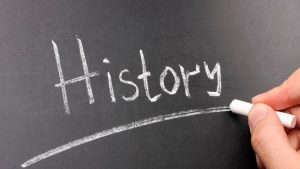In my never-ending quest to make the study of the past vital, energizing and, yes, relevant, I tell my students they’re living through history. Most of the time they nod their heads and smile indulgently, making me feel as if I’m just some old professor talking through her hat.

A case in point: Just the other day, in my graduate seminar on Contemporary Jewish Life, we were discussing how much has changed over the past decade for LGBTQ Jews and their relationship to the Jewish community. Or rather, I was holding forth. Most of the millennials seated around the table were not convinced. From their perspective, the ‘sea-change’ to which I repeatedly alluded was not far-reaching enough, the pace of integration much too slow. Invoking the past, calling on those in the room to compare 1996, much less 1916, with 2016, went nowhere. History had no claims on them.
That was then. A week or so later, in the wake of the election, my students suddenly understood all too well what I meant what I said they were living through history. Words that had once seemed academic such as ‘turning point,’ ‘watershed’ and ‘sea-change’ now assumed an outsized, and immediate, presence in their lexicon.
Walloped by history-in-the-making, they gave voice to a wide array of emotions: dismay, outrage, fear, confusion. Some of my students were so flattened out, so hollowed, by the results of the election that their voices were stilled.
As the term draws to a close, we continue to reckon with what lies ahead. I have no easy answers. But one thing is certain: the presidential race of 2016 is one history lesson my students are not apt to forget anytime soon.

